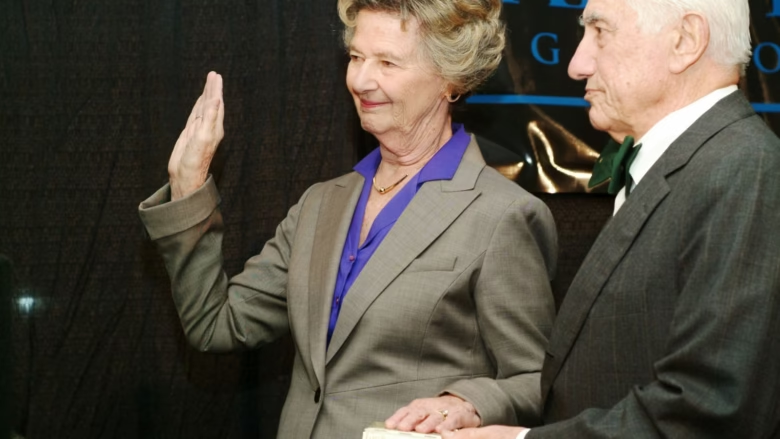Sandy Springs voters will return to the polls Dec. 2 to choose their next mayor after no candidate secured a majority in November’s election. It’s a scenario the north Fulton city has seen before. Nearly two decades ago, when Sandy Springs held its first-ever elections, runoffs were part of the package—a sign that even from the beginning, voters took their choices seriously.
In November 2005, Sandy Springs elected its first mayor and city council. While Eva Galambos won the mayor’s race outright, several council races headed to runoffs that December, setting an early precedent for competitive elections in the fledgling city.
The Time
It was November 2005. Republican Sonny Perdue was in his second year as Georgia’s governor—the first GOP governor since Reconstruction. President George W. Bush was in his second term, and the Iraq War dominated headlines. The Atlanta Braves had just wrapped another season without a World Series ring, and the University of Georgia was preparing for a bowl game under coach Mark Richt.
In north Fulton County, something historic was taking shape. After decades of frustration with Fulton County government, Sandy Springs had finally won the right to incorporate. The city would officially come into existence Dec. 1, 2005—the first new city in metro Atlanta in more than 50 years.
But before the city could open its doors, it needed leaders.
The Election
Eva Galambos had spent years fighting for Sandy Springs cityhood. Her name was synonymous with the incorporation movement. When she announced her candidacy for mayor, she was the clear frontrunner.
The November election drew massive turnout for a municipal race. Voters were energized, eager to shape their new city’s future. Galambos won decisively, clinching the mayor’s office without a runoff.
But while the mayor’s race was settled, several city council races remained up in the air. Multiple council seats headed to December runoffs, scheduled for Dec. 6—just five days after the city’s official incorporation.
The stakes were enormous. Sandy Springs was starting from scratch. The city had no employees, no city hall, no police force, no public works department. Whoever won would be building a government from the ground up.
Galambos had campaigned on efficiency and better services than Fulton County had provided. She promised a lean government model that would keep costs down. Her vision included contracting with private companies for city services—a controversial approach that would draw national attention.
The city had already begun planning. Officials were negotiating contracts with private firms to handle everything from public works to court administration.
What Happened Next
Galambos took office in December 2005 and immediately began building a city from nothing. The privatization model she championed became Sandy Springs’ signature. The city contracted out most services, keeping the municipal workforce small and costs low.
The approach was controversial but effective. Sandy Springs delivered services efficiently while maintaining lower taxes than surrounding areas. The model attracted national attention and became a case study in municipal government.
Galambos served two terms, stepping down in 2013. By then, Sandy Springs had transformed from a startup into one of Georgia’s most successful cities. The city had built a reputation for innovation and fiscal responsibility.
Sandy Springs’ incorporation also sparked a wave of cityhood movements across north Fulton and metro Atlanta. Milton, Johns Creek, and Chattahoochee Hills all followed Sandy Springs’ lead, incorporating in the years after 2005.
The competitive elections that marked Sandy Springs’ founding—including those December 2005 runoffs—set a tone for civic engagement that continues today.
Lessons From History
Sandy Springs voters in 2025 face a different decision than their predecessors did in 2005. The city Galambos inherited existed only on paper. The city today’s voters are choosing a mayor for is an established community with 20 years of history.
But some things remain constant. Sandy Springs voters still take their elections seriously. The city that fought for decades to govern itself hasn’t lost its civic energy.

B.T. Clark
B.T. Clark is an award-winning journalist and the Publisher of The Georgia Sun. He has 25 years of experience in journalism and served as Managing Editor of Neighbor Newspapers in metro Atlanta for 15 years and Digital Director at Times-Journal Inc. for 8 years. His work has appeared in several newspapers throughout the state including Neighbor Newspapers, The Cherokee Tribune and The Marietta Daily Journal. He is a Georgia native and a fifth-generation Georgian.



